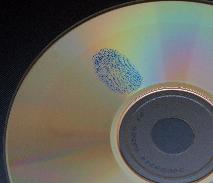Tracking, Monitoring and Monetizing Video Content: New Report Available

Technologies used for tracking video content on TV and over the Internet are evolving from a means of simply policing misuse into a business tool helping content creators and distributors come up with new revenue streams and improve existing businesses. A study conducted by Myers Publishing LLC and subsequent interviews found that while a majority of media executives are unfamiliar with the most-used tracking technologies, known as watermarking and fingerprinting, those who do use them are putting them to use for everything from improving operations to calculating ways of creating and sharing ad revenue streams.
The Myers survey of 272 media executives, commissioned by global media intelligence company Teletrax, found that more than 80 percent of respondents to the survey believe broadcast content owners are at risk of adversely impacting their bottom lines by not having tools in place to track, monitor and measure their content, and some 89 percent of respondents believe Internet content owners are at risk. But while 71 percent say they think the technologies are useful for content protection and "proof of performance," they are largely confused by or unaware of the solutions that exist. Only 40 percent say they see the technologies as useful in establishment of new business opportunities.
Click to Read Myers Daily Research Data
Subsequent interviews done for the report and exclusively for the Myers/Teletrax Tracking, Monitoring and Monetizing Video Content Report advises that those who use the technologies are using them as a business tool. One company putting the technologies to strong business uses is NBC Universal. When NBCU's TV promotions department first installed watermarking technology about four years ago, executives there saw it as primarily a means of making sure stations used promotional spots as intended in their markets. Today, NBCU's use of the technology is more sophisticated. Scot Chastain, VP of affiliate advertising and promotional services, says the tracking is now done largely to correlate the time of day promotions run with the market for any of the 210 DMA geographic zones that have NBC stations.
"At the beginning it was 'let's take a look and see what the stations are doing and if we needed to crack down on misuse,'" Chastain says. "But in the last couple of years it is definitely a marketing tool to put media value behind our projects." Chastain's group has also been able to increase its understanding of how to distribute promotions to stations to improve use and cut down on confusion, especially in smaller markets that have less automation. "We have definitely been able to fine tune our marketing priorities, fine tune and change the ways we were distributing, to make it much more effective," Chastain says. NBCU is "making sure everything is very focused, to maximize our reach and frequency.”
Read TiVo-Worthy TV Everyday at JackMyers.com
Other companies are using the tools to inform their production methods, to confirm other methods, or even create new revenue streams. Reuters, among the biggest distributors of video on earth, uses watermarking and fingerprinting technologies to not only track proper use of its content but also to find out what its clients around the world are using most among video sent to clients. It continually adjusts its choices of where to send crews and has changed its editing to package stories so clients are more likely to use them, after using tracking technologies to find out which spots were most popular and what order they were used in local newscasts and other shows. Nielsen Media Research uses watermarks inserted into programming to help track viewing among homes in its audience measurement panel, providing automated data in addition to the manual diaries its viewers keep. Digital media consultant Brad Hunt, a board member of tracking technology company Teletrax and former CTO of the MPAA, says content companies are also starting to use the technologies to negotiate ad revenue sharing deals on the Internet, using the tracking technologies to find out when video is being used and request a cut of any ad revenues. He says some are even working to insert ad tags that would allow ad insertion on the fly for the content owner from or to a third-party site. Making money through sharing ad revenues is much better than the blunt instrument of forcing a Web site to remove content, he says. "When you have a takedown, nobody wins. The consumer doesn't win, the content owner doesn't win, the Web site operator doesn't win," Hunt says. "If the Web site would share some of the revenue with the content creator," then all three parties can do well.
The Myers/Teletrax study of media executives was correlated with research from Myers' Emotional Connections™ Study of 8,000 Americans, which found that viewing of programs on non-standard devices such as over the Web, on cell phones and on other handheld devices is growing exponentially, especially among younger viewers. In homes with DVR technologies like TiVo, there is an even higher prevalence of viewing of network programming on non-TV devices. Tracking technologies, though, lag for these non-standard viewing methods. The report finds a need for the technologies to improve, not only to tracking and monitor use for copyright purposes, but also to find and create new business opportunities for non-TV viewing.
List Your Job Openings at Jobs at JackMyers.com, emPowered by mediabistro.com
The report, titled,Tracking, Monitoring and Monetizing Video Content, is being released November 27 at a breakfast hosted by JackMyers.com and Teletrax, featuring speakers Tim Armstrong of Google, Carl Fremont of Digitas, George Kliavkoff of NBCU and David Levy of Turner Broadcasting. The report is available at no cost at www.JackMyers.com (Media Research section).
This special report is underwritten by Teletrax, "the leader in digital watermarking for video media tracking, measurement and intelligence." For more information, contact: Peter Winkler at pwinkler@teletrax.tv. The editorial content has been prepared by Myers Publishing with no involvement or approval of sponsors.


